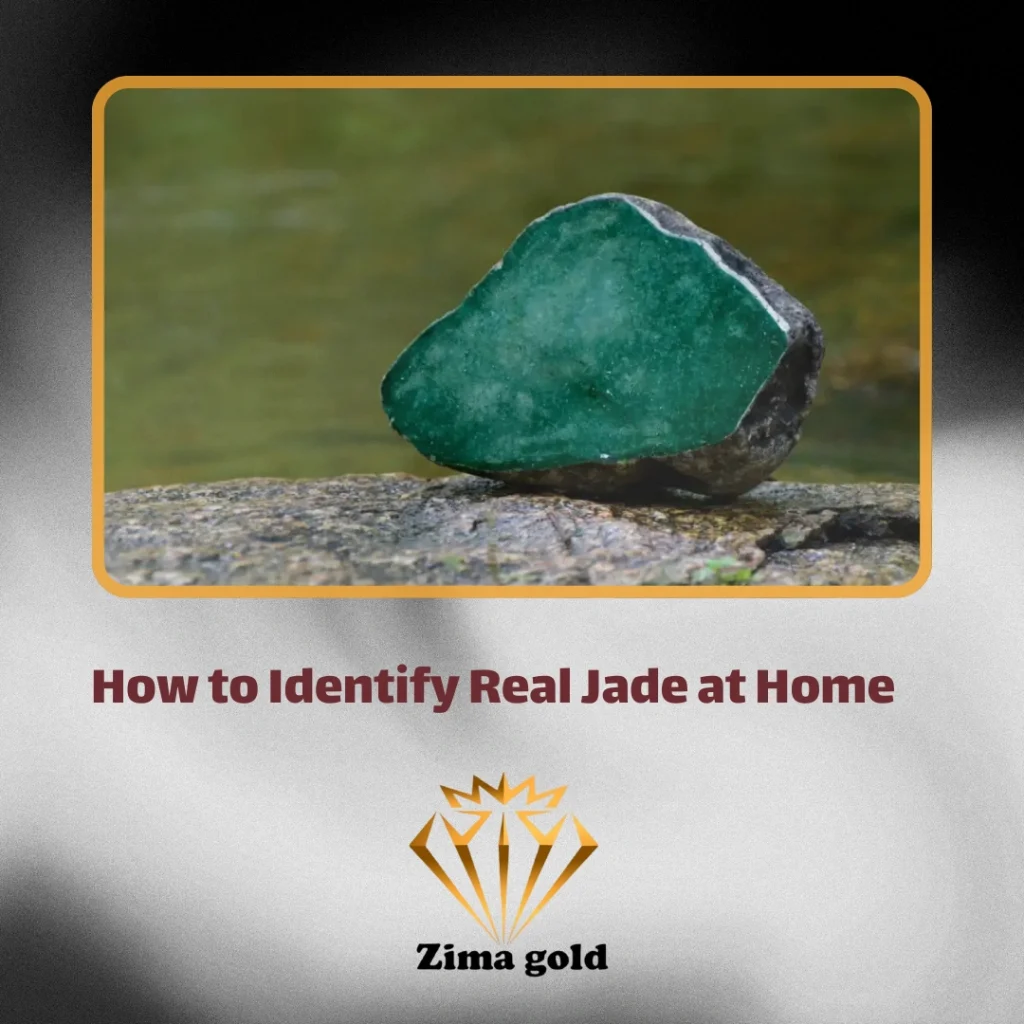How to Identify Real Jade at Home.Jade is one of the most valuable and sought-after gemstones, admired for its beauty and symbolism. It comes in two main varieties: Jadeite (rarer, more transparent, and more expensive) and Nephrite (softer and more common). Because of jade’s popularity and high market value, fake and treated stones are widely sold. Learning how to identify real jade at home is crucial to avoid overpaying for imitations and to ensure you are getting a genuine, high-quality gemstone.
Key Characteristics of Genuine Jade
-
Hardness: Jade has a hardness of about 6–7 on the Mohs scale, while glass or plastic imitations are much softer.
-
Texture: Genuine jade has a fibrous, granular structure that can be seen under light or magnification.
-
Weight: Due to its density, real jade feels heavier than fake stones of the same size.
-
Luster: Real jade has a glassy to waxy luster, while fakes often look too shiny or dull.
Methods to Identify Real Jade at Home
1. Touch and Temperature Test
Real jade feels cool to the touch. Even after holding it in your hand for a few minutes, it stays cooler than glass or plastic because of its high thermal capacity.
2. Light Test
Shine a bright LED flashlight through the stone:
-
Real jade shows natural, fibrous inclusions and uneven color patterns.
-
Fake jade (glass or resin) appears overly uniform and too perfect.
3. Sound or “Ping” Test
Gently tap two pieces of jade together:
-
Genuine jade produces a clear, resonant, bell-like sound.
-
Fakes produce a dull or plastic-like sound.
4. Magnification Test
Under a loupe or magnifier, real jade reveals a fibrous, interlocking crystal structure. Fake stones often show tiny air bubbles or an unnaturally smooth, flawless surface.
5. Scratch Test
Using a needle or razor blade, gently scratch an inconspicuous area:
-
Real jade will not scratch easily due to its hardness.
-
Glass or plastic imitations will scratch quickly.
6. Weight Test
Genuine jade feels noticeably heavy compared to glass or resin fakes. Simply compare it by hand with a similar-sized piece of glass or plastic.
Common Mistakes When Identifying Jade
-
Relying Only on Color: Not all green stones are jade, and fake jade can be dyed to mimic natural shades.
-
Being Fooled by Low Prices: Real jade is rarely cheap. If the price seems too good to be true, it probably is.
-
Ignoring Natural Imperfections: Genuine jade often has slight irregularities, whereas fakes look unnaturally perfect.
When to Seek Professional Testing in home
Home tests are useful for a quick assessment, but if you are purchasing an expensive piece of jade, consider laboratory testing methods such as:
-
Spectroscopy
-
Refractometer analysis (refractive index)
-
UV/IR fluorescence tests
These methods provide conclusive results and are recommended for high-value stones.

Frequently Asked Questions
Are all jades green?
No. Jade can come in many colors including white, lavender, yellow, red, and black.
How can I tell if jade has been dyed?
Dyed jade usually has overly bright, unnatural color and may reveal concentrated pigment under magnification or with a cotton swab soaked in acetone.
Does real jade have healing properties?
Many cultures believe jade has calming and protective qualities, but these claims are more spiritual than scientifically proven.
Conclusion
Identifying real jade at home is possible using temperature, weight, sound, and light tests. These simple techniques help you spot obvious fakes. For high-value purchases, it’s wise to get a professional gemological report to ensure authenticity. By following these steps, you can shop with confidence and invest in a genuine, valuable piece of jade.

